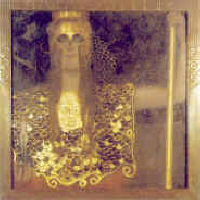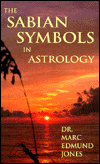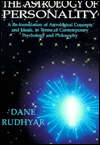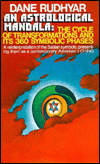
|

The Prophetic Sabian Symbols
by Gavin Kent McClung

Always round off a zodiacal degree to the next whole number when using its Sabian Symbol. For instance, the Sabian Symbol for both 23º01' and 23º59' Leo is 24 Leo. 23º00' is 23 Leo.
Click on images to order. |

PART ONE: Speaking of the Eon
After Marc Edmund Jones and the clairvoyant Elsie Wheeler discovered the Sabian symbols, Jones placed in storage the cards on which they were recorded. He felt that making scientific use of the symbols in astrology might not be possible. At the time (the mid-1920s), Jones and others were involved in the scientific reorganization of astrology itself, and in various types of occult investigation. It was these other interests that brought him into temporary partnership with Elsie Wheeler to obtain a new set of symbols for the degrees of the zodiac. He had found the degree-symbols of Charubel to be useful, but felt that the Charubel series was overly moralized or slanted in terms of "good/bad" interpretation. Also, as Charubel's symbols were meant to illuminate the Ascendant degree only, Jones believed that a fresh approach could produce a set of symbols with more universal significance. When he came to realize that it might never again be possible to re-create the situation that had allowed the original discovery of the Sabian symbols, Jones decided to publish them. In 1931, the symbols became available to students in a mimeographed series of lessons called "Symbolical Astrology", which included interpretive vignettes for each degree, together with elaborated versions of the images originally obtained through Elsie Wheeler's special gift. At that time, Dane Rudhyar became interested in the symbols. He saw their potential, and in 1936 brought them to wider attention in the world of astrology by including a condensed version in his book The Astrology of Personality. In 1953, Marc Edmund Jones published The Sabian Symbols in Astrology, and wrote that this book "probably marks the fruition, for the present life-time of the author, of a project in astrological research which has occupied...more than three decades..." (p. viii) He also suggested that further refinements would be the work of "fresh minds in another generation." In one form or another, the Sabian symbols have had wide use by astrologers for some 70 years, and their interest and utility for deep insight into horoscopes has not diminished. In Jones's book, the symbols are presented in the brief images seen by Elsie Wheeler, and recorded under his guidance. Symbols and keywords are given, with 1 Aries-1 Libra on facing pages andsoforth, significantly linking each symbol to its 180-degree opposite. Jones wrote this about his purposes: "...It is a highly stylized and often very oblique depiction...vignettes designed to fall into place in any possible connection of experience...conceived as a species of poetry...a catalyst for the creative inspiration..." (p. 140) Terms like "poetry" and "catalyst" are apt, for the symbols are all of this and more. A strong keyword for the Sabian symbols as a whole could well be Intensification. Rudhyar wrote articles about symbols and symbolism in American Astrology in 1944-45 and again in 1954-55. He continued working with the Sabian symbols over the years, and in 1973 published An Astrological Mandala, which reinterprets the cycle as "a contemporary American I Ching", useful for divination even outside of astrology, as a tool of metaphysical discernment. Rudhyar presents the symbols sequentially, with the zodiac divided into two Hemi-cycles (starting Aries, Libra), four Acts (starting Aries, Cancer, Libra, Capricorn), twenty-four Scenes (one-half sign each), and seventy-two Levels (five degrees each). The 360 Phases of this creative arrangement are the degree-symbols themselves, many of them reworded, and all of them reinterpreted on the basis of Rudhyar's aesthetic insights. It can be useful to study the two cycles side-by-side, to see which symbols are re-worded and which have remained as described by Elsie Wheeler. Rudhyar asserts that "...the entire zodiac constitutes a mandala [an arcane pattern of unfoldment]...[with] rhythm as well as form...And language, particularly any poem, also has rhythm and form. The 360 Sabian symbols are words in a vast cosmic poem, whose meaning transcends the...images visualized by the clairvoyant." (p. 11) The concept of the Sabian symbols as an "astro-poetic" tool of interpretation or inspiration strikes like lightning into the heart of a subject that some consider lost in the darkness of intellectual confusion. In the literature of all ages, we see inexplicably powerful images used to convey messages of great scope and power, through words of a forcefulness that is entirely out of proportion to their everyday usage. Here is a mystery with which one must inevitably contend, in order to contemplate the deeper meaning of astrology. Poets have known about this dynamic source of human response for many ages, from the modern school of the Imagists to the European Romantics, from the writers of brilliant Japanese haiku to the magical bardic singers of the Druidic age, and beyond. The late Eric Schroeder—whose work was acknowledged by Marc Edmund Jones in his book on the Sabian symbols—attempted a magnificent tour de force in Zodiac: An Analysis of Symbolic Degrees, published posthumously in 1982. Schroeder constructed an ingenious synthesis based not only on the Sabian symbols, but also on the degree work of Maurice Wemyss, Charubel, and LaVolasfera/Sepharial. His conclusion is a triple proposition: "[1]...a special...poetic symbolizing power pervades nature while evading or transcending...the known laws of material behavior; [2]...this power uses material events as repositories...in conformity with a sort of imaging which can be traced very far back in the religious or metaphysical concepts of mankind; [3]...while astonishingly free with disguise...this power is rhetorical in method, relying...on what might be called rhyming emphasis, and working on feeling ['feeling' is a Sabian keyword for the Moon]. It seizes upon that part of a complex phenomenon which is notable to the perceiving intelligence in question...[to provide] the valid detail for some given image..." (p. 11) Marc Edmund Jones suggested that his own access to this primordial source, and that of his clairvoyant assistant, was facilitated by "...tapping back into early Mesopotamian or allied roots..." which seem to lie within the subconscious mind of the human race as a whole. (Sabian Symbols, pp. 330-331) Poet and author Robert Graves—in his erudite, often obscure book, The White Goddess—writes in depth of the lost roots of poetry and its involuntary fascination for all people throughout the ages. He suggests that prophecy and poetry must intertwine in the practice of true poetry, using words, symbols and images to place the minds of speaker and listener in direct contact with esoteric forces that exist outside time and space. But he sees this source as being part and parcel with the real world as we know it, if only through our awareness of its presence—the sense that "something is there". This same spiritual wellspring might simply be called "Mother Nature" just as well as the "White Goddess". Myriad names are given to it in the myths and legends of the ancient past. Since many of the best astrologers who read charts for clients often seem to "prophesy" more than to "predict", these words by Robert Graves bring to consciousness a special aspect of astrology's basic field of attention: "...the ancient Hebrew distinction between legitimate and illegitimate prophecy—'prophecy' meaning inspired poetry, in which future events are not necessarily, but usually, foretold—has much to recommend it. If a prophet went into a trance and was afterward unconscious of what he had been [saying], that was illegitimate; but if he remained in possession of his critical faculties throughout...that was legitimate. His powers were heightened by 'the spirit of prophecy,' so that his words crystallized immense experience into a single poetic jewel; but he was...[himself]...the sturdy author and regulator of this achievement..." (p. 441) Astrologers may recognize here a classic argument in favor of astrology over other divinatory means, in that astrology presumably allows its practitioner to exercise full control of his or her rational faculties while actively exploring realms that do not yet exist in the day-to-day world, or exist no longer. Thus, while open-minded astrologers may see value in spiritualist or mediumistic activity, it is not necessary to become passive mediums in order to tap into the recondite matrix upon which astrology's broad range of symbols is based. The question that now confronts us is, how may an astrologer employ the Sabian symbols to read horoscopes more sensitively, and at the same time strengthen his or her feeling for astrology? Rudhyar's specific answer is quite direct: "...The material is to be USED, to serve as a catalyst to deepen thinking about individual experiences [or outer events] and their essential meaning..." (p. 6) This view remarkably agrees with that of Marc Edmund Jones, given earlier. The comments of these two outstanding astrological thinkers quite possibly supports a keyword for the Sabian symbols en masse, which was offered before: Intensification. Rudhyar spoke of the whole lifetime represented by a horoscope as its "Eon". This Eon is the total expression of every internal or external event, every action, reaction or interaction of a person's entire life—its overall "Soul" from birth to death. Logically, if a lifetime is a cycle, so also any complete cycle may be viewed as an Eon with an independent "life" at its own special level of existence. The Sabian symbols are such a cycle. They too may constitute an Eon with a unique individual existence in the metaphysical world. Yet the full and complete lifetime of this particular great Eon—that is, the cycle of zodiacal degrees and symbols—is indeterminate, at least from the point of view of mankind. The symbols apparently reach across a time-span of such vast extent as to be essentially "timeless". As we know, the degrees of the zodiac approximate the whole round of days that makes up a year on planet Earth, a year in the life of Man. The power of the symbols interpenetrates the year of growth that continues from equinox to equinox, from solstice to solstice, waxing and waning with the seasons of the living planet. Speaking poetically, any given day of Nature's springtime may arouse a poet's Muse—and "the Muse" is still another aspect of Graves's universal White Goddess. Therefore, our poet's true inspiration may also be seen as that particular day's palpable and living relationship to the year as a whole, as conveyed to him by a series of imagistic symbols—no matter what precise words of expression that individual mind may use to visualize them. Perhaps the original true symbols come down to us from a time when the earth traveled more rapidly through the ecliptic, a time with 360 days in the year to exactly match the 360 symbols. Of course, we do not know this to be a certainty, but the thought of some unique perfection in the first conception of the universe is hard to relinquish. Symbols for degrees do not replace signs, houses or aspects, which also are symbols that have significance in and of themselves alone. A native's Eon contacts the Eon of the Sabian symbols at specific points, through the placement of planets and sensitive points in a natal horoscope. Thus the human Eon is rooted in something greater (or larger, or longer) than itself through the horoscope of birth. In turn, it makes that greater whole the greater still by the mundane contribution of its own lifelong part in the "Act of the Universe". In the next part of this article, we will try to illuminate or exemplify the Eon of a great man's life through his horoscope, and show the Sabian symbols at work in their own reality.
Copyright © 1990-2000 by Gavin K. McClung. All Rights Reserved.
Visit the author's web site at www.hyperionseries.com  mail@khaldea.com Web design and all data, text and graphics appearing on this site are protected by US and International Copyright and are not to be reproduced, distributed, circulated, offered for sale, or given away, in any form, by any means, electronic or conventional. Unless otherwise noted, all text, data and graphics appearing on this site are copyright © 2000-2010 by Michael R. Meyer. All Rights Reserved. See Notices for copyright statement, conditions of use, and disclaimer. |About|Calendar|Ephemeris| |Charts|Art Gallery|Library|Resources| |Shop|Links|Rudhyar Archival Project|Help| Web design and programming for this entire site copyright © 2000-2004 by Michael R. Meyer. |



